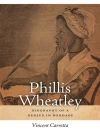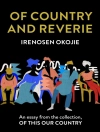In ‘Stephen Hero, ‘ James Joyce embarks on a semi-autobiographical exploration of the formative years of a young artist named Stephen Dedalus. This novel, written in Joyce’s characteristic stream-of-consciousness style, offers a rich tapestry of vivid imagery and intricate character development, delving into themes of identity, self-discovery, and the clash between individual aspiration and societal expectation. Although ultimately abandoned in favor of its more polished successor, ‘A Portrait of the Artist as a Young Man, ‘ this work presents an essential glimpse into the evolution of Joyce’s literary voice and his philosophical inquiries regarding art and existence. James Joyce, born in Dublin in 1882, was deeply influenced by his own experiences in a city fraught with political, cultural, and religious tensions. His upbringing in a Catholic environment and exposure to the complexities of Irish nationalism are evident throughout ‘Stephen Hero, ‘ revealing the forces that shaped his worldview and narrative style. Joyce’s innovative literary techniques, as seen in this early work, would continue to inform his later masterpieces and solidify his status as one of the preeminent authors of the 20th century. I highly recommend ‘Stephen Hero’ to readers interested in the genesis of modernist literature and the intricate journey of self-actualization. Joyce’s ability to capture the nuances of thought and emotion invites readers to engage with the struggles of the artist, making it not only a compelling read but also a profound commentary on the nature of creativity and identity.
Giới thiệu về tác giả
James Joyce (1882–1941), an Irish novelist, short story writer, poet, and literary pioneer, is celebrated as one of the most influential and groundbreaking authors of the 20th century. His narrative innovations and psychological depth mark a significant departure from the conventional novel structure, giving him a prominent place in modernist literature. Joyce’s early depiction of the Irish middle-class life came with his first work, ‘Dubliners’ (1914), a collection of short stories exploring the mundanity and complexities of Dublin’s urban life. His semi-autobiographical novel ‘A Portrait of the Artist as a Young Man’ (1916) further introduced the character Stephen Dedalus, whose life is deeply explored in the posthumously-published ‘Stephen Hero’. While ‘Stephen Hero’ offers a more expansive account of Joyce’s alter ego, it is the reworked version, ‘A Portrait of the Artist as a Young Man’, that became part of the literary canon, laying the psychological and stylistic groundwork for his later works. Joyce’s most monumental novel, ‘Ulysses’ (1922), a landmark work in the stream-of-consciousness narrative, reimagined the Homeric Odyssey through the experiences of its protagonist Leopold Bloom in Dublin. Joyce’s last major work, ‘Finnegans Wake’ (1939), showcased his linguistic mastery through a complex, multilayered language that represented the flowing nature of dreams. Joyce’s literary approach shaped not only Irish literature but also had a profound impact on the global narrative form. His contributions remain a subject of extensive scholarly research and discussion within literary circles worldwide.












